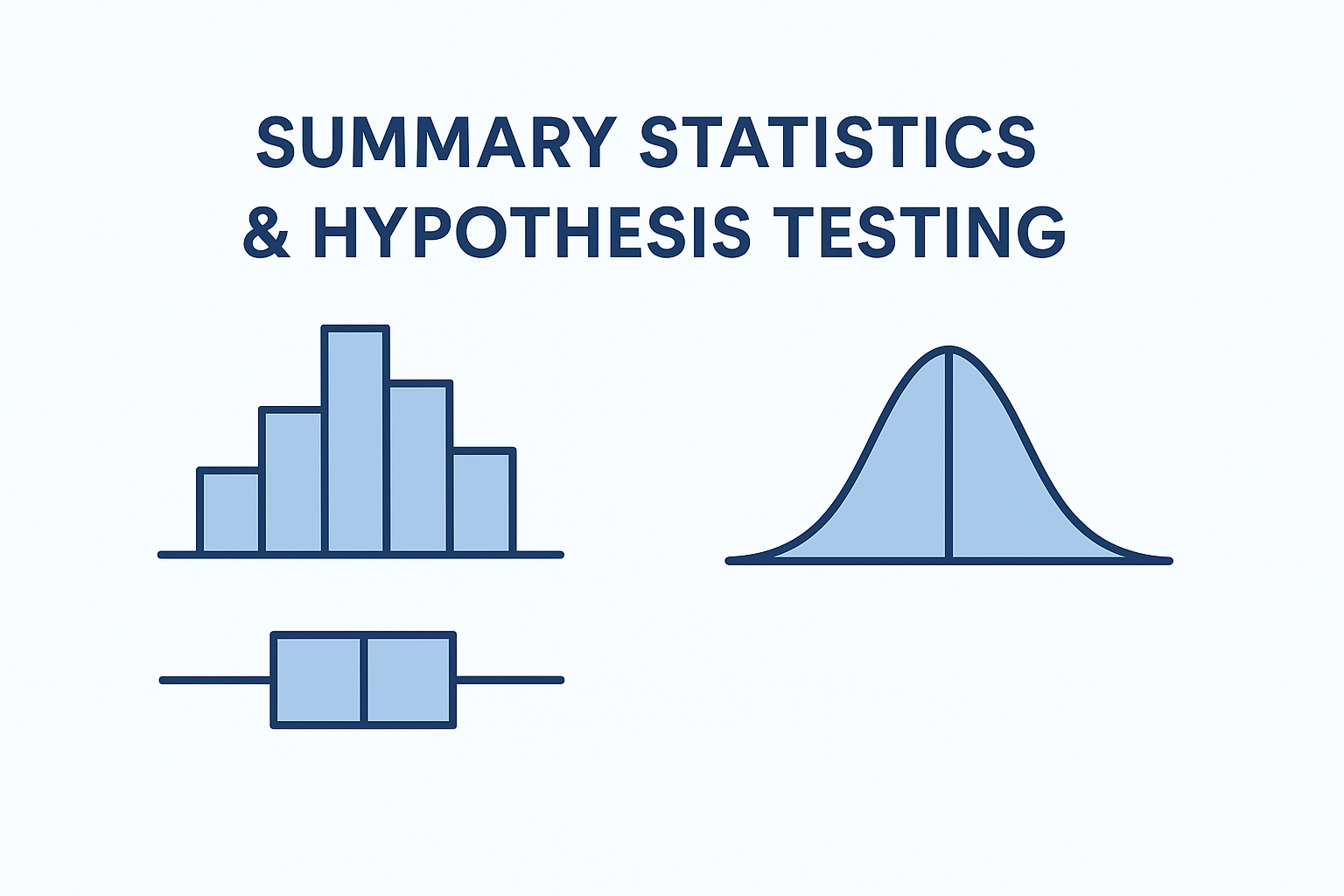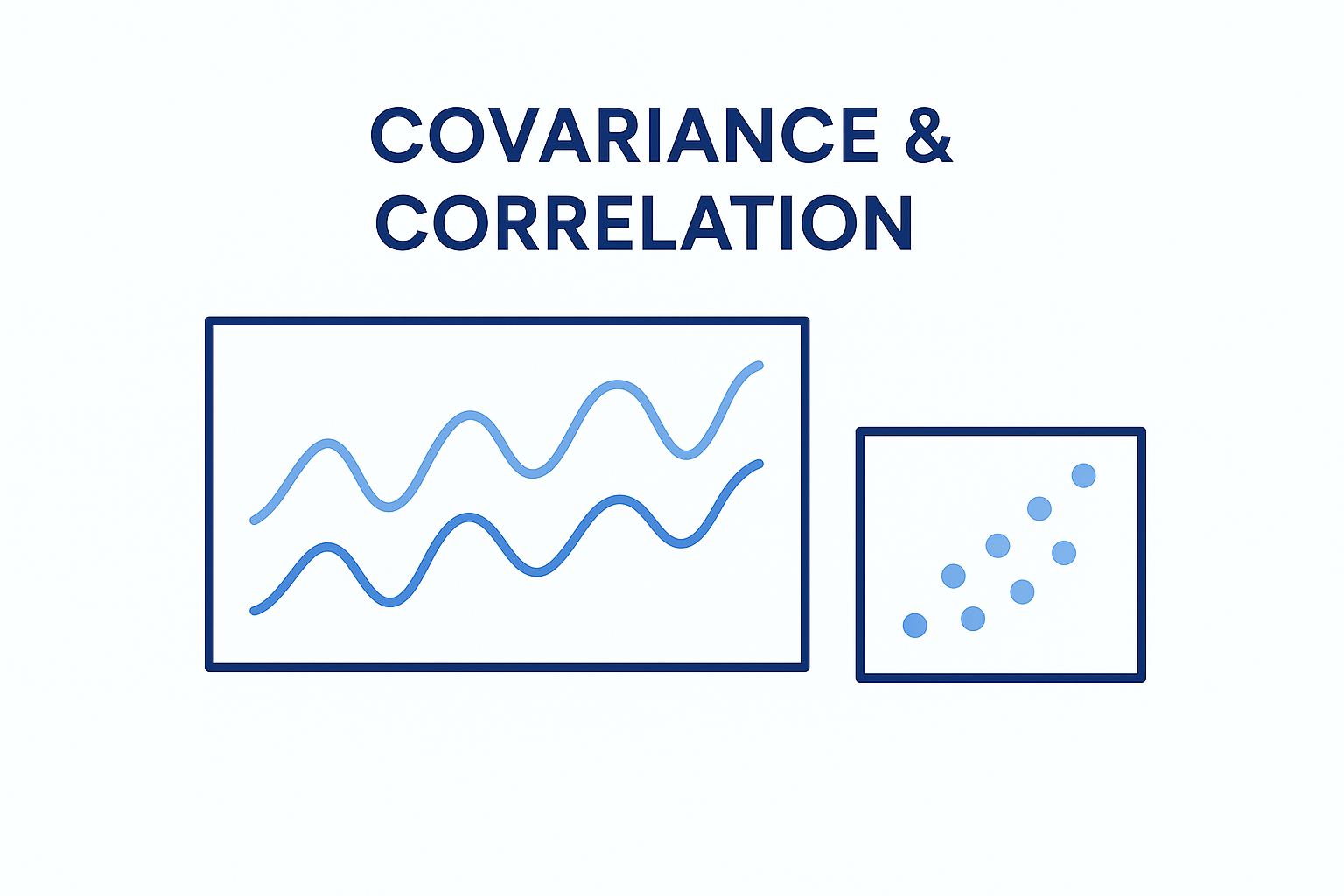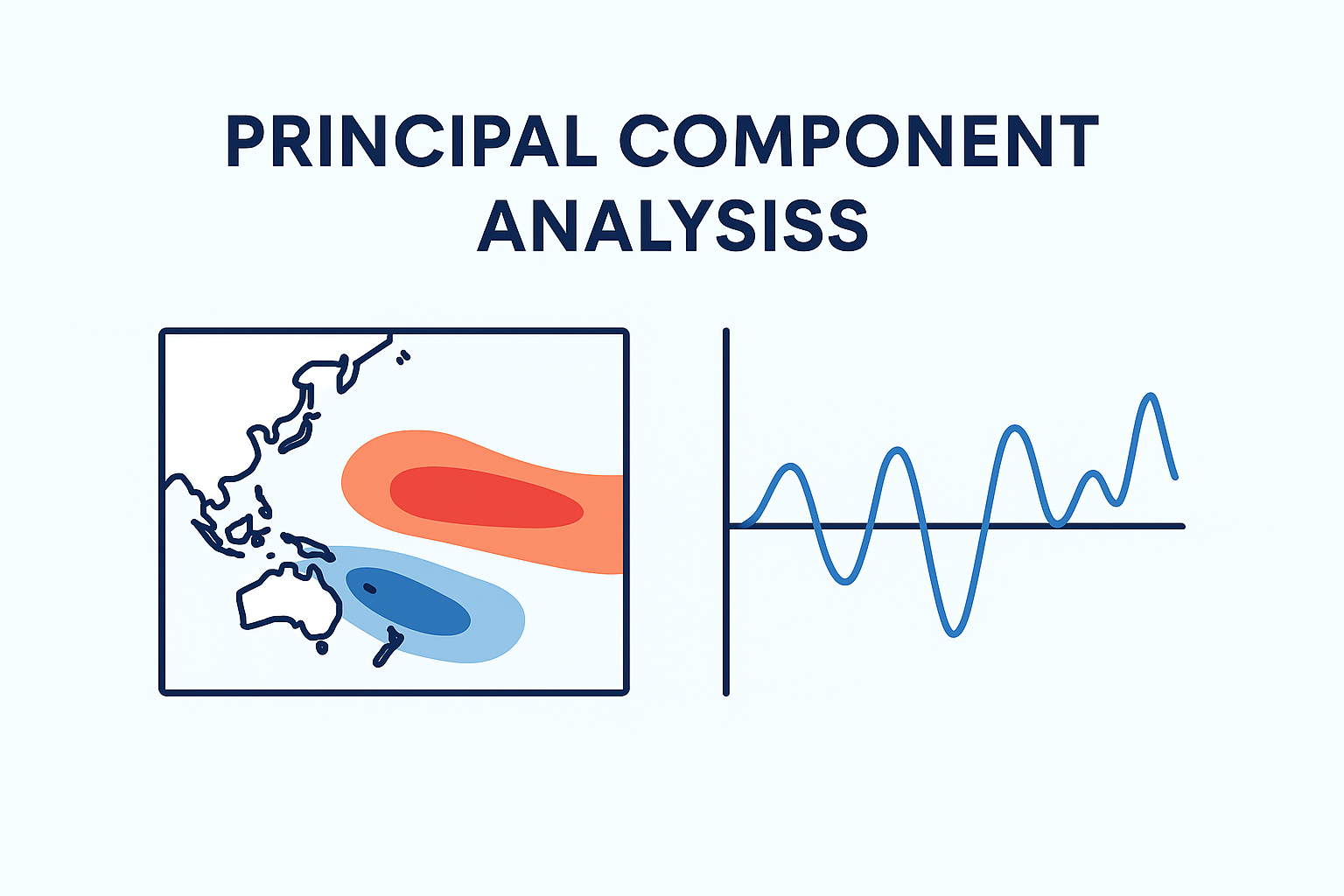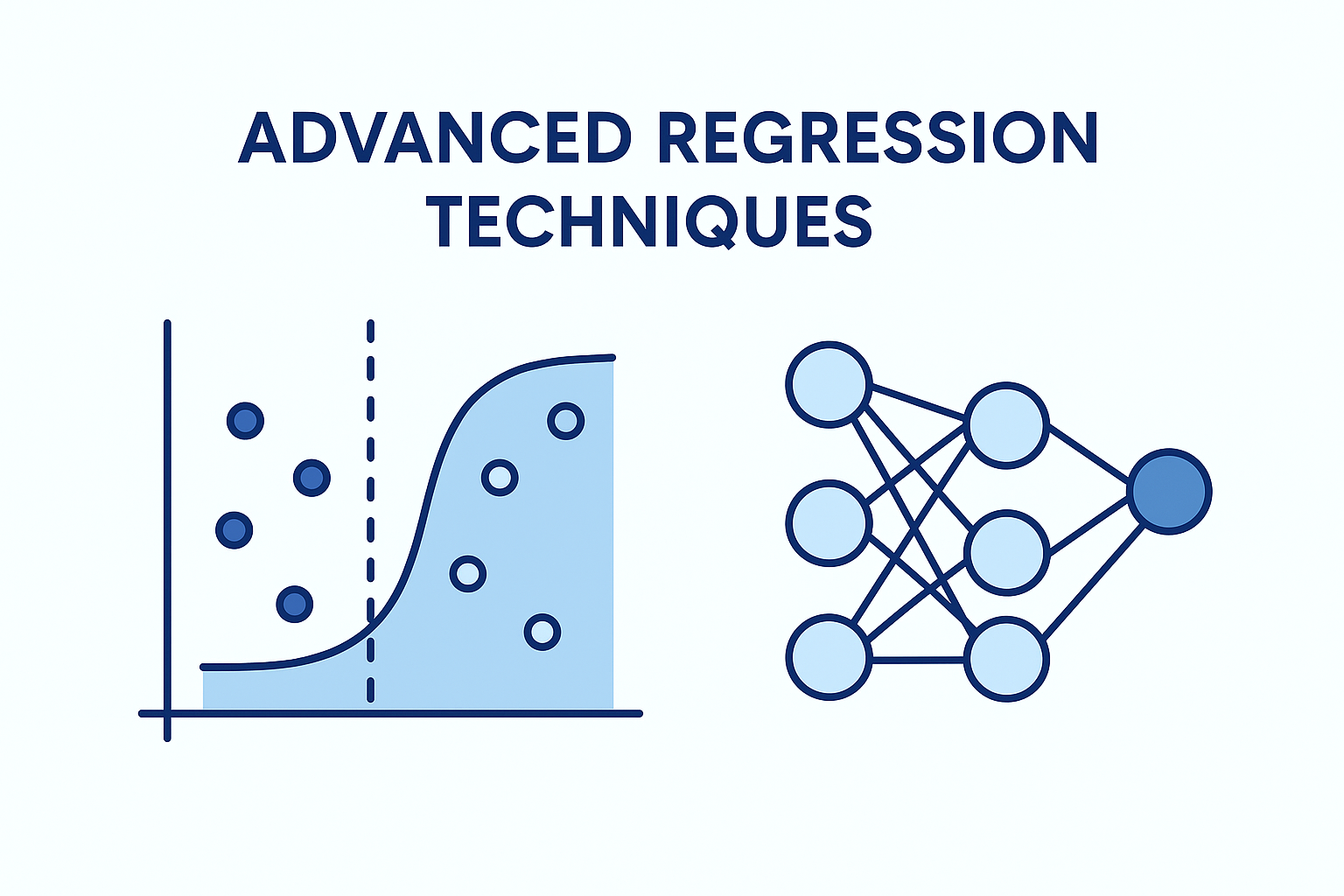Bio (CV)

I am a lecturer in Climate Science, a UKRI Future Leaders Fellow, and a Centre for Higher Education Practice Fellow in the School of Ocean and Earth Science at the University of Southampton. Before moving to the UK, I was a Postdoctoral Scholar at WHOI, following the completion of my Ph.D. at Harvard University.
I develop statistical and physical tools to quantify climate change and understand the underlying mechanisms.
My research interests include:
a. Climate data and statistical climatology;
b. Machine learning applications in climate and environmental studies;
c. Climate variability, projections, and underlying physical dynamics;
d. Strategies for climate adaptation and policy formulation.
I led the development of the Dynamically Consistent Ensemble of Temperature (DCENT) and have published papers in Nature, Nature Climate Change, Nature Food, Science Advances, Journal of Climate, and other top-tier journals in Earth and Climate Sciences. My work has been featured by New Scientist, NPR, Science, and other international media.
News
- I have been awarded a UKRI Future Leaders Fellowship (Round 9)!
- Our new paper on climate change and added-sugar intake is out in Nature Climate Change!
The paper has Altmetric score of 2325 one week after publication, ranking #1 among articles of a similar age in NCC and #17 across all disciplines. It has been covered by more than 300 news outlets, including major international media such as Associated Press, CNN, Eos, NPR, and Scientific American.
- The infilled version of DCENT (DCENT-I) is available! Data Access
- Our new paper on evaluating SST dataset is out in GRL!
Group & Opportunities
Current Members:
-
 PhD StudentPacific Temperature Gradient; SLP reconstruction
PhD StudentPacific Temperature Gradient; SLP reconstruction -
 PhD StudentClimate impact on food & nutrition; Network science
PhD StudentClimate impact on food & nutrition; Network science -
 PhD Student (co-supervised)North Atlantic Warming Hole; AMOC
PhD Student (co-supervised)North Atlantic Warming Hole; AMOC
Past Members: N/A
PhD Recruitment: I am at my supervising capacity, hence not actively seeking additional candidates. However, FULL funding is available for one 3.5-year PhD position (no need to apply through a PhD training programme). If you meet the requirements below and are interested in co-developing a project with me, please get in touch.
- Strong interest in climate change.
- Solid background in mathematics and physics.
- A Master’s or Bachelor’s degree in math, physics, computer science, atmospheric, or oceanic sciences is preferred.
Postdoc Recruitment: Funding is also available for two 3.5-year postdoctoral positions: one on climate modeling and simple model development, and one on AI for climate. Advertisements will be released in September or October, 2025. Please stay tuned!
Publications
† student or mentee; * co-first author; corresponding
Highlighted List
Full List
2025
2024
2023
2022
2021
2020
2019
Before 2019
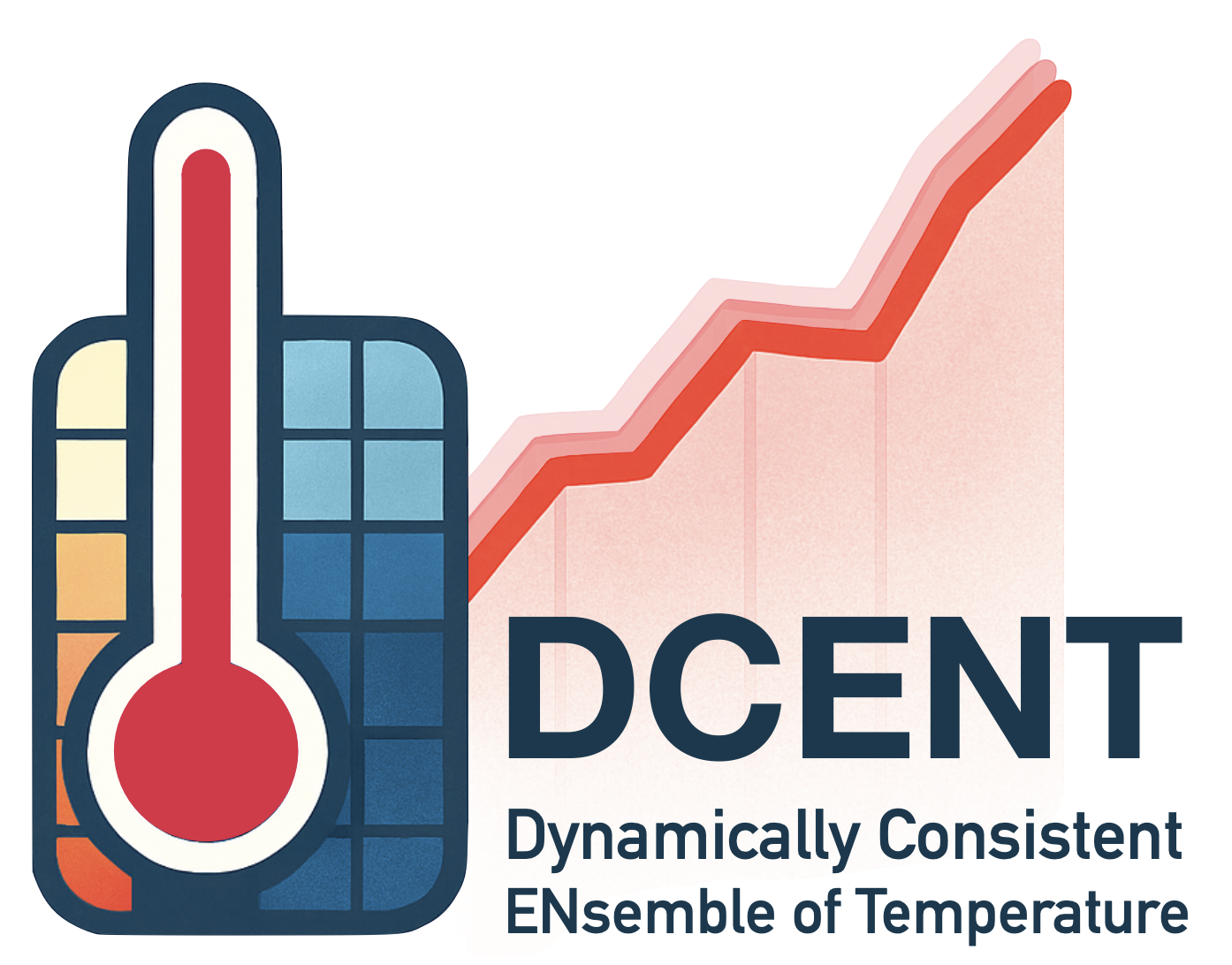
Dynamically Consistent Ensemble of Temperature (DCENT) is a 200-member ensemble of 5°x5° monthly Earth surface temperature estimates since 1850. Its infilled version, DCENT-I, extends coverage to the global domain using Gaussian process regression with anisotropic kernels to enhance spatial pattern fidelity. Together, they support quantification of historical climate change at global and regional scales and analysis of associated variability and dynamics.
DCENT Reference:
DCENT-I Reference:
Data Access
The links below provide summary statistics for DCENT and DCENT-I at global (GL), Northern Hemisphere (NH), Southern Hemisphere (SH), land (Lnd), ocean (Ocn), and individual member (Mem) scales.
Annual Times Series: GL | NH | SH | Lnd | Ocn | Mem
Monthly Times Series: GL | NH | SH | Lnd | Ocn | Mem
Gridded Products:
DCENT-I (5°x5°, monthly; infilled): Ensemble mean | Individual members | Climatology | Diagnostics
DCENT (5°x5°, monthly; non-infilled): Ensemble mean | Individual members | Climatology
DCSST-I (1°x1°, monthly; infilled for AMIP run): Ensemble mean
More guidance can be found in this NCAR climate data guide.
DCENT Development
A 5 minute quick story about how DCENT was developed. For more details, you can also watch videos that walk through our main findings.
Background and Unsolved Problems
By 2023, "most state-of-the-art" global mean surface temperature (GMST) estimates suggest an increasing GMST since 1850, with 4-stage decadal variability on top of the overall warming (Fig. 1).
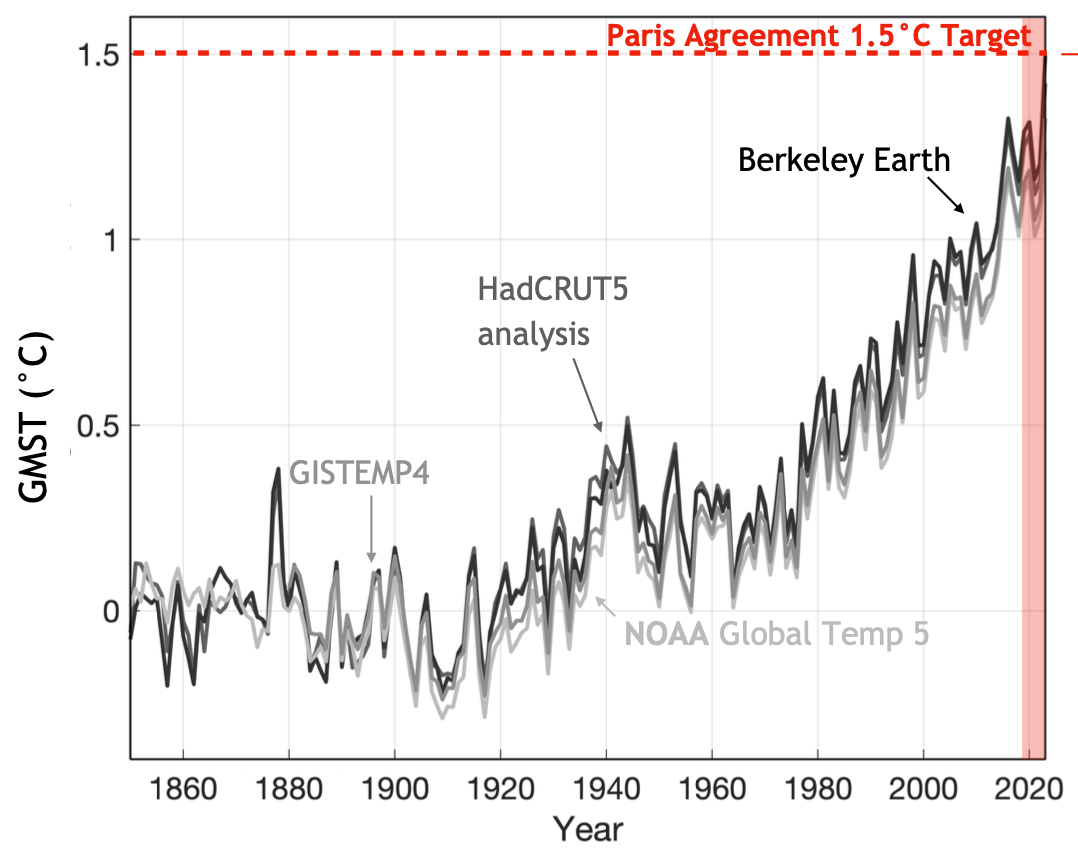
Fig. 1. Existing GMST estimates. Anomalies are relative to the 1850-1900 mean.
However, all GMST estimates combine two different quantities: 2 m air temperature over land and ice, and upper-15 cm water temperature over open oceans. These were measured with different instruments, stored in separate archives, and analyzed by different groups of scientists.
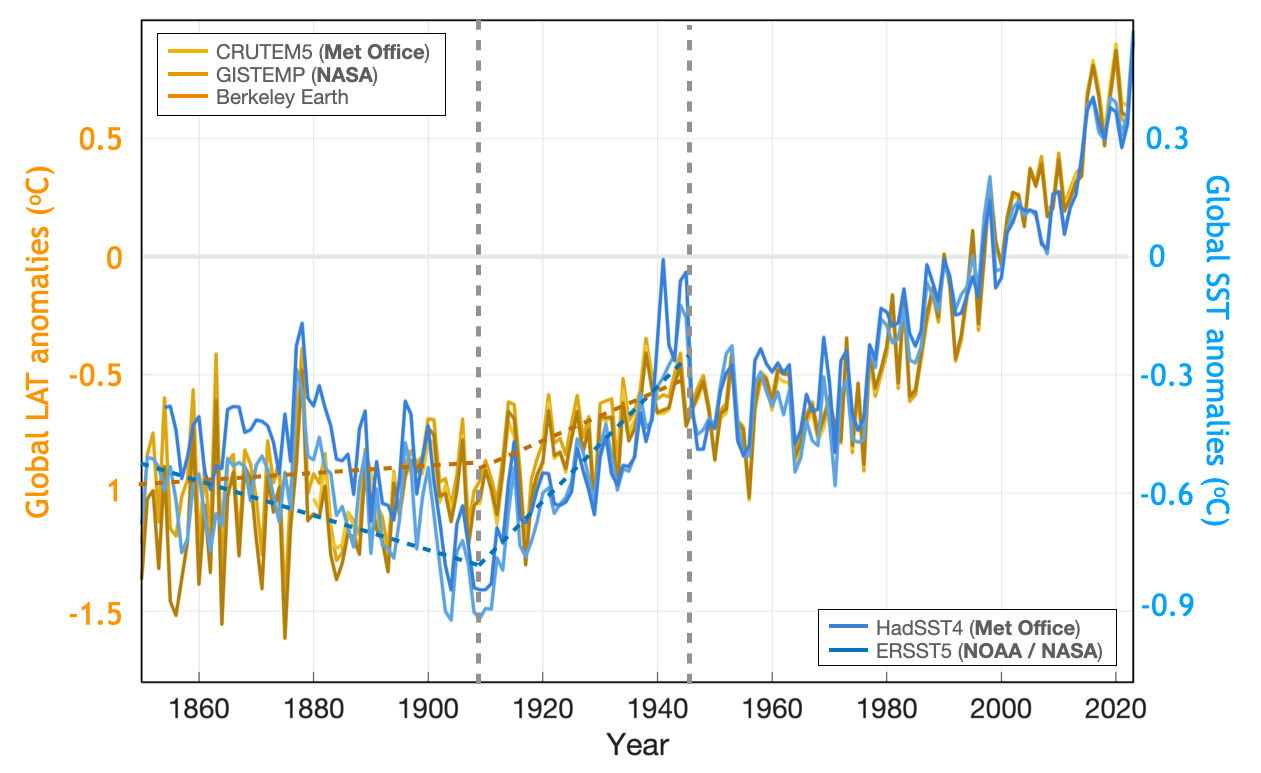
Fig. 2. Land and ocean mean temperatures from existing estimates.
Although land and ocean temperatures have tracked closely since 1946, they diverge before the 1940s (Fig. 2). In the early 20th century, oceans warmed faster than land, despite expectations that land should warm more quickly because it is water-limited and loses less heat through evaporation. Such model–data discrepancies could undermine confidence in climate model projections.
Why? Because raw land and ocean temperature measurements contain biases. For example, early sea surface temperatures (SST) were measured by lowering buckets into the ocean, and measuring water temperature on ship decks (Fig. 3). During this process, evaporation cooled the samples, producing readings that were too low.
Fig. 3. How to measure SSTs with a bucket? Ocean Weather Ship Record B (1947) from Youtube
Existing datasets address these issues to some extent but have important limitations. Menne et al. (2009, 2018) developed an algorithm to detect abrupt changes in land temperature records from instrument changes or station moves, but it assumes that temperature differences between nearby stations have no temporal memory in time (zero autocorrelation). Kennedy et al. (2019) corrected SST records by measurement method, assuming that data from the same year and method share the same bias, especially before the 1940s. Moreover, land and ocean temperature products were developed independently (Fig. 4).

Fig. 4. Schematic of data development for most existing datasets.
Our Vision and Approach
We aim to improve bias correction for both land and ocean archives, and to better inter-calibrate the two.
We made three key improvements, detailed below:
[1] We improved land station homogenization by accounting for temperature's memory (autocorrelation) in the detection algorithm (Chan et al., 2024a). The improved method detects more actual breaks and fewer false identifications, leading to a colder baseline temperature and a larger warming trend on land. A quick story is in the video below.
[2] Different ship groups may have used different instruments or handled the same instrument differently. To evaluate systematic differences in SSTs collected by various nations or ship groups, we developed a group-wise intercomparison framework (Chan and Huybers, 2019). This approach detects offsets of up to 1 °C among groups thought to use bucket measurements, with important implications for regional SST trends. A related story is in the video below.
[3] Jones et al. (1986) proposed using coastal station temperatures to evaluate SST biases. This was, however, largely forgotten in later SST products until Cowtan et al. (2018), who used linearly scaled land temperatures to infer SST evolution. Yet, because land and ocean differ in heat capacity, water availability, and albedo, linear scaling is not ideal.
In Chan et al. (2023), we applied a coupled energy balance model that better represents air–sea interactions. We found land and ocean temperatures inconsistent along global coasts before 1940 among all existing estimates (Fig. 5). In Chan et al. (2025), we further show evidence from SST diurnal cycles to show that this discrepancy mainly reflects under-corrected SST biases from changing instruments in the late 19th century.
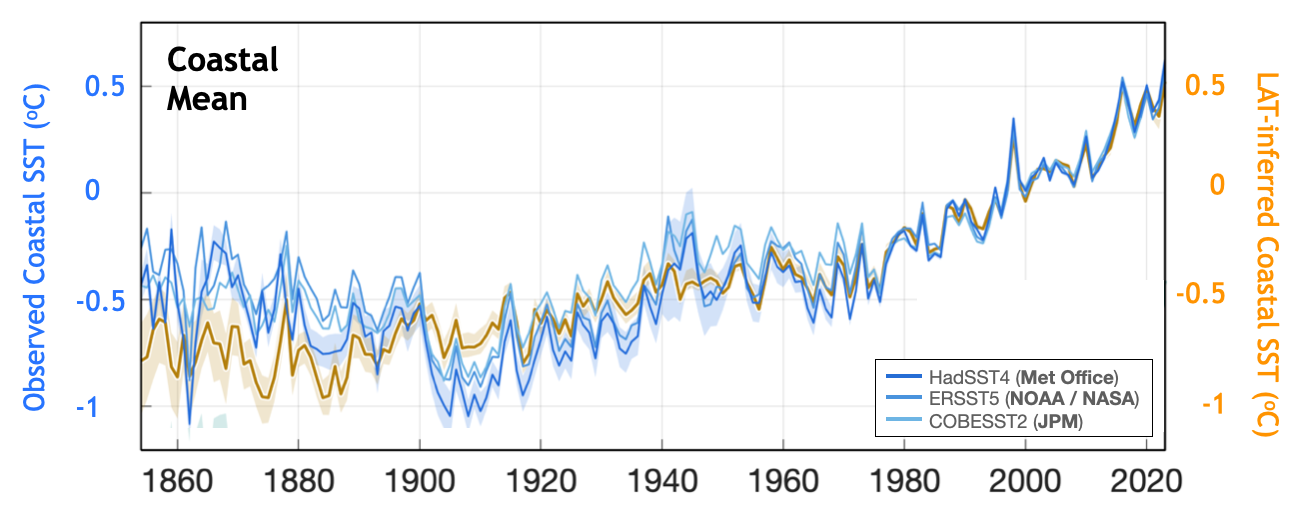
Fig. 5. Land temperature-inferred versus observational SSTs along global coasts.
Our Key Achievements
These improvements enable an ensemble of temperature estimates with dynamically consistent land and ocean records and comprehensive uncertainty quantification. We call this dataset the Dynamic Consistent Ensemble of Temperatures (DCENT; Chan et al., 2024). Its infilled version, DCENT-I (Chan et al., 2025) extends coverage to the global domain and supports broader climate applications.
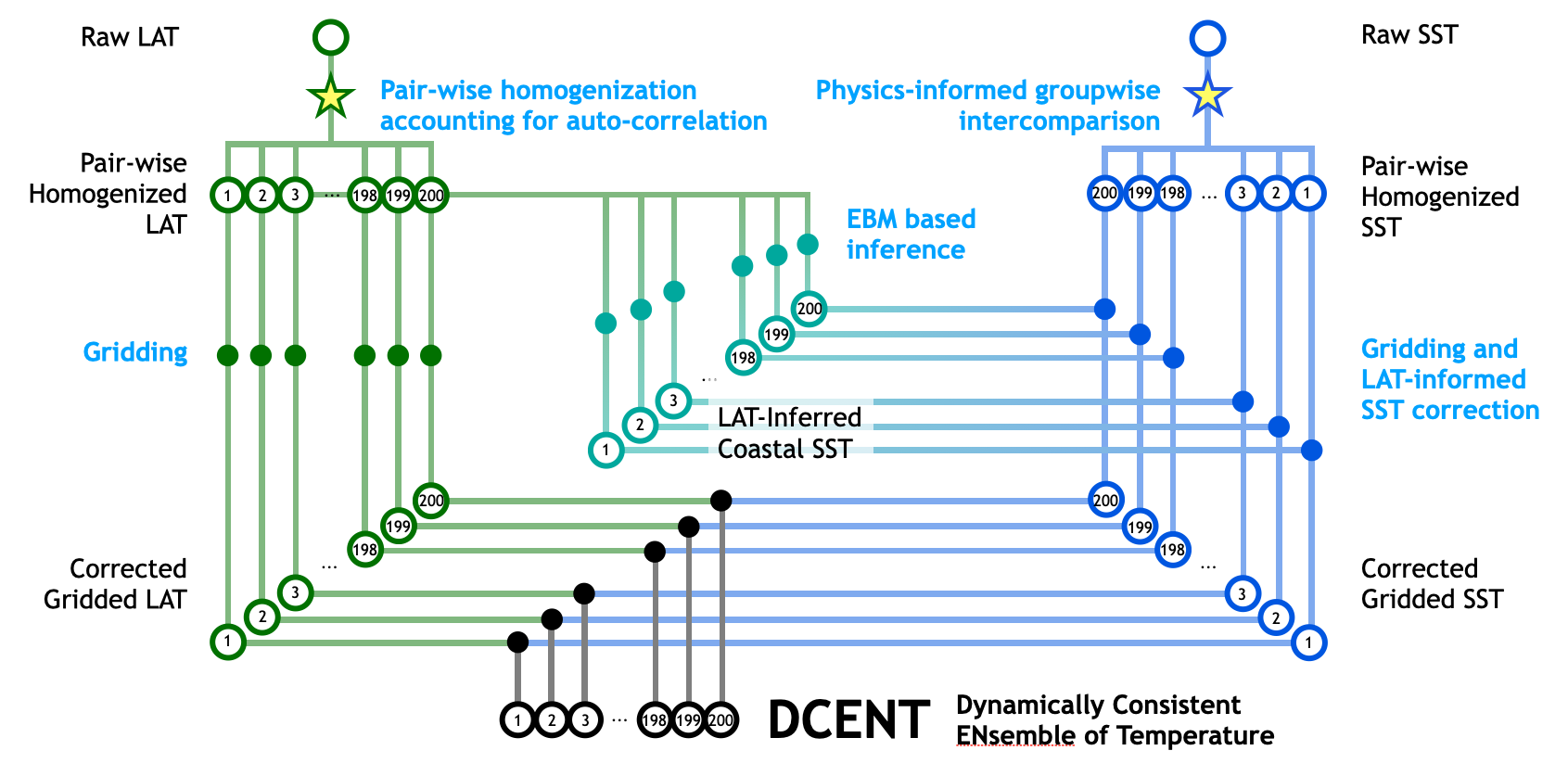
Fig. 6. Schemetic of DCENT development.
DCENT suggests a steadier and faster warming since 1850 compared with existing estimates (Fig. 7). DCENT is also more consistent with independent temperature proxies from coral reefs and expected warming based on external radiative forcing (Chan et al., 2025).
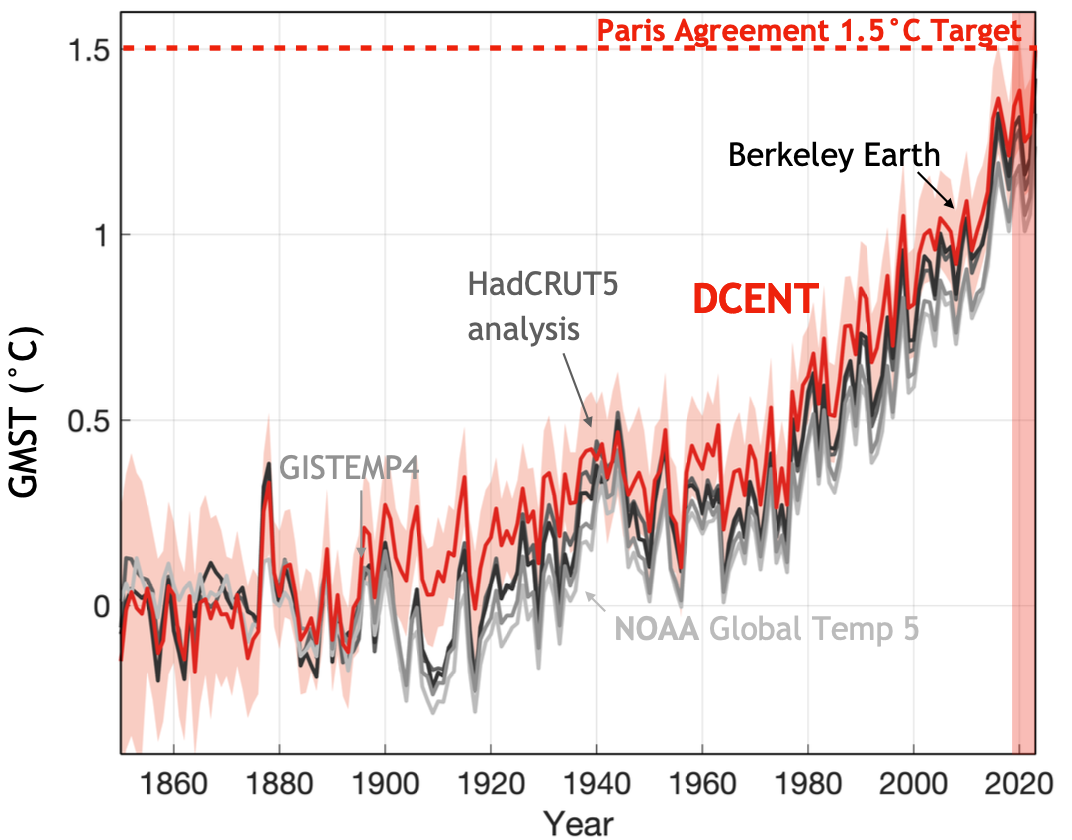
Fig. 7. as Fig. 1, but with DCENT GMST indicated.
In addition to improving global estimates in the late 19th and early 20th centuries, our innovations also refine temperature estimates at regional scales and in other periods, with important implications for hurricane studies.
AMOC and Cold Blob
The subpolar North Atlantic “cold blob” shapes European weather, storm tracks, and projections. Its cause affects how we interpret AMOC trends and future regional climate risk.

Fig. 1. Observed 1900-2023 sea-surface temperature trend.
In Fan et al. (2025, Science Advances), Yifei diagnosed historical coupled-model simulations and showed that AMOC weakening cools the region via two pathways: less ocean heat import and a colder, drier lower atmosphere that reduces downward clear-sky longwave radiation. The AMOC trend accounts for about two-thirds of the observed cooling, with oceanic and radiative pathways contributing roughly equally.
After identifying the drivers of the observed cold blob, Yifei also examined how well models reproduce these mechanisms (Fan et al., 2024, Journal of Climate). Only 11 out of 32 models produced a cold blob. Even among those, mechanisms split: four attribute cooling mainly to reduced ocean heat-transport convergence (OHTC), four to radiative processes, and three to mixed contributions. Base-state AMOC strength explains ~39% of intermodel spread in the OHTC role, implying that mechanism inferences from a single model are unreliable.
Past Work
Our past work spans data quality, variability, and dynamics across the climate system, including:
- Correcting ship-track errors in sea-surface temperature records with Bayesian methods.
- Explaining differences in land temperature variance projections between CMIP5 and CMIP6.
- Quantifying dynamical controls on the East Asian Jet using the zonal momentum budget.
- Detecting anthropogenically driven shifts in global Köppen climate regimes since the 1950s.
[1] Navigation and Location Error
An important question beyond the temperatures themselves is where SSTs were measured. We developed a Bayesian model to infer positional errors in early ship tracks and examined how such errors affect SST reconstructions (Dai et al., 2021).
[2] Land Temperature Variability
We investigated changes in land temperature variance using CMIP5 and CMIP6 ensembles. In Europe and North America, CMIP5 projected a strong variance increase with warming (Chan et al., 2020), whereas CMIP6 showed only a modest, uncorrelated increase (Chan et al., 2022). Using a simple physical model, we demonstrated that differences in radiative forcing, rather than land–air coupling explain the contrast.
[3] Atmospheric Jet Dynamics
Using the zonal momentum budget, we quantified the contributions of different dynamical processes to the interannual variability of the East Asian Jet and revealed distinct upstream and downstream controlling mechanisms. (Chan et al., 2020). The mechanism is summarized in the figure below.
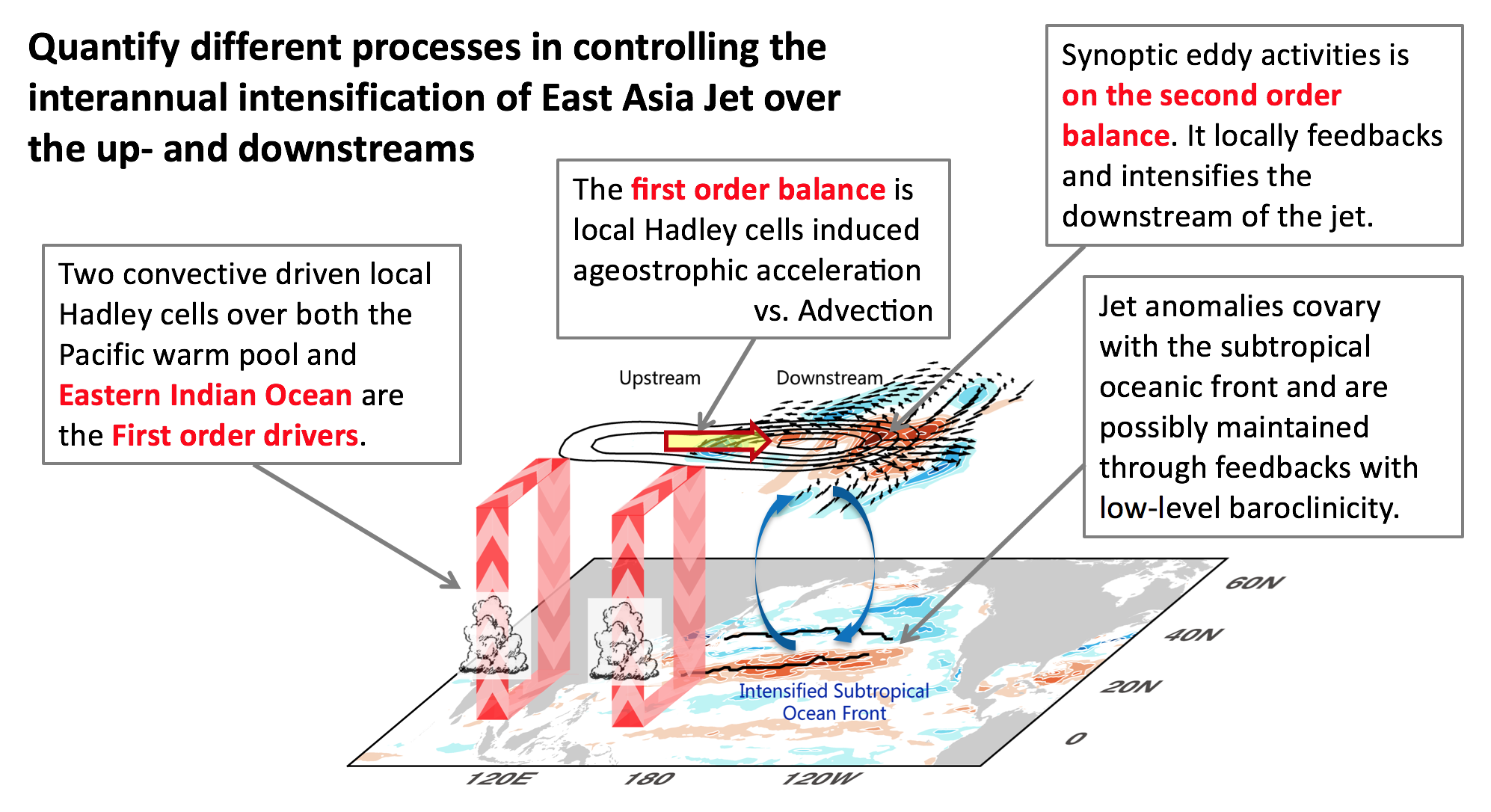
[4] Köppen Climate Classification
We detected and attributed historical changes in the Köppen climate regimes (Chan and Wu, 2015), finding anthropogenically induced shifts across all five major regimes since the 1950s. About 5.7% of global land has changed climate regimes, a result highlighted as a key climate science advance in 2015 (news).
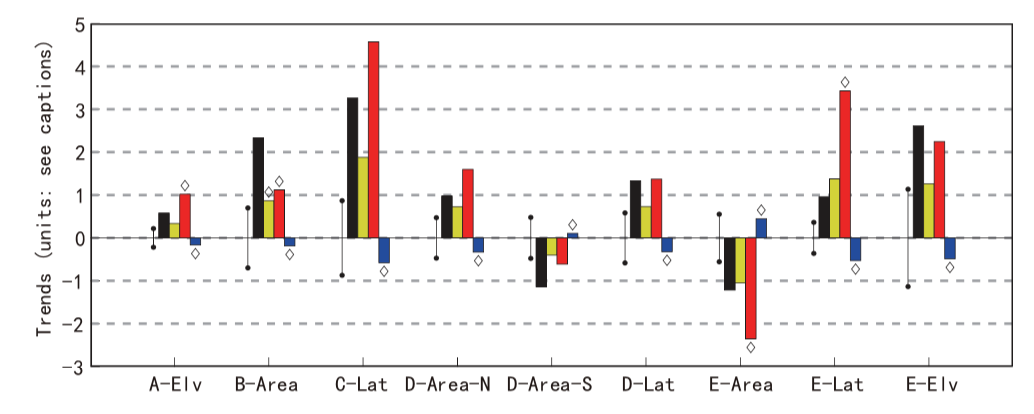
Fig. 1. Detection and attribution of changes in the five major Köppen climate regimes, 1950–1998. Shown are observed trends (black) and CMIP5 simulations with all forcings (yellow), GHG forcing (red), and natural forcing (blue). Error bars indicate internal variability; diamonds mark significant model–observation differences (p<0.05).
Outreach
Selected Media Coverage
| 10 /09/ 2025 | You're more likely to reach for that soda when it's hot outsidege | National Public Radio |
| 08 /09/ 2025 | Rising Temperatures Lead to A Spike in Sugar Consumption | Scientific American |
| 08 /09/ 2025 | Heat Spurs Unequal Consumption of Sweet Treats | Eos |
| 08 /09/ 2025 | As world gets hotter, Americans are turning to more sugar, study finds | Associated Press |
| 08 /09/ 2025 | Global warming linked to consumption of sugary drinks and ice cream | Agence France-Presse |
| 04 /06/ 2025 | The global temperature may be even higher than we thought | New Scientist |
| 10 /02/ 2025 | Have we already breached the 1.5°C global warming target? | New Scientist |
| 10 /01/ 2025 | 2024 confirmed as first year to breach 1.5°C warming limit | New Scientist |
| 05 /02/ 2024 | Oceans May Have Already Seen 1.7°C of Warming | Eos |
| 05 /02/ 2024 | Expert reaction to sponge skeleton data and passing 1.5C | Science Media Centre |
| 31 /01/ 2024 | Is the world 1.3°C or 1.5°C warmer? Historical ship logs hold answers | Science Insider |
| 20 /10/ 2023 | Crowdsourced Science Pulls Off a Daring WWII Data Rescue | Eos |
| 29 /06/ 2021 | To understand the future of hurricanes, look to the past | AAAS EurekAlert! |
| 19 /08/ 2019 | How Much Hotter Are The Oceans? The Answer Begins With A Bucket | National Public Radio |
| 17/ 07/ 2019 | Corrections to ocean-temperature record resolve puzzling regional differences | Nature News & Views |
| 07/ 01/ 2016 | 2015’s key climate science research advances | Yale Climate Connections |
Knowledge Exchange
I am committed to sharing knowledge about climate change with the wider community, particularly with future generations. My involvement includes serving as a volunteer guide at the Harvard Natural History Museum, where I contributed to the climate change exhibit. Since 2020, I have also collaborated with Citizen Schools, focusing on providing public school students with meaningful opportunities to engage with and learn about climate change. These collaborations have included:
| 04/ 2020 | Develop course materials for the Climate Science Catalyst program | Citizen Schools |
| 01/ 2020 | Volunteer for a 7th-grade course: "Weather, Water, and Climate" | Perry School, Boston |
